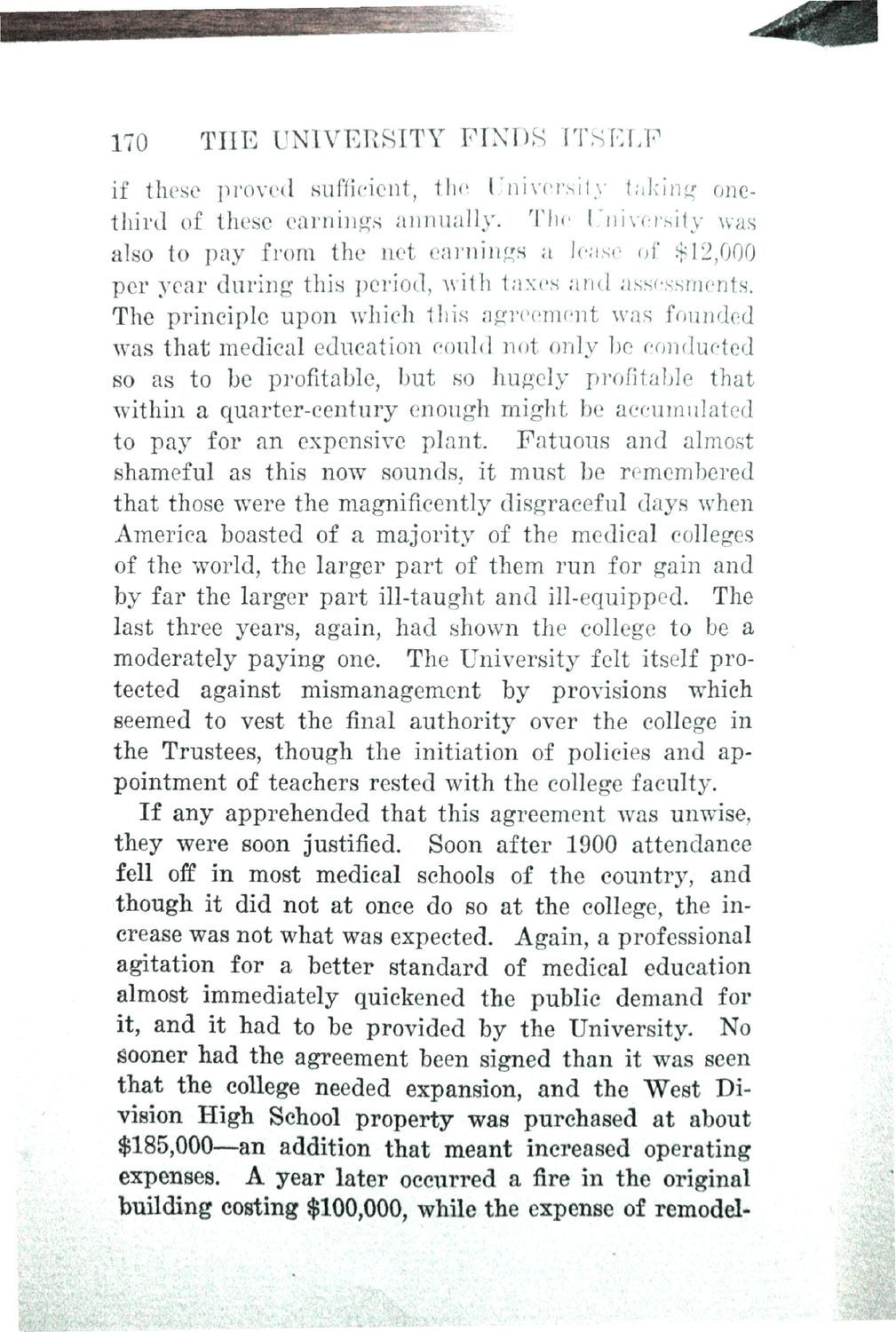| |
| |
Caption: Book - History of the University (Nevins)
This is a reduced-resolution page image for fast online browsing.

EXTRACTED TEXT FROM PAGE:
170 THE UNIVERSITY FINDS ITSELF if these proved sufficient, the University taking onethird of these earnings annually. The University was also to pay from the net earnings a lease of $12,000 per year during this period, with taxes and assessments. The principle upon which this agreement was founded was that medical education could not only be conducted so as to be profitable, but so hugely profitable that within a quarter-century enough might be accumulated to pay for an expensive plant. Fatuous and almost shameful as this now sounds, it must be remembered that those were the magnificently disgraceful days when America boasted of a majority of the medical colleges of the world, the larger part of them run for gain and by far the larger part ill-taught and ill-equipped. The last three years, again, had shown the college to be a moderately paying one. The University felt itself protected against mismanagement by provisions which seemed to vest the final authority over the college in the Trustees, though the initiation of policies and appointment of teachers rested with the college faculty. If any apprehended that this agreement was unwise, they were soon justified. Soon after 1900 attendance fell off in most medical schools of the country, and though it did not at once do so at the college, the increase was not what was expected. Again, a professional agitation for a better standard of medical education almost immediately quickened the public demand for it, and it had to be provided by the University. No sooner had the agreement been signed than it was seen that the college needed expansion, and the West Division High School property was purchased at about $185,000—an addition that meant increased operating expenses. A year later occurred a fire in the original building costing $100,000, while the expense of remodel-
| |